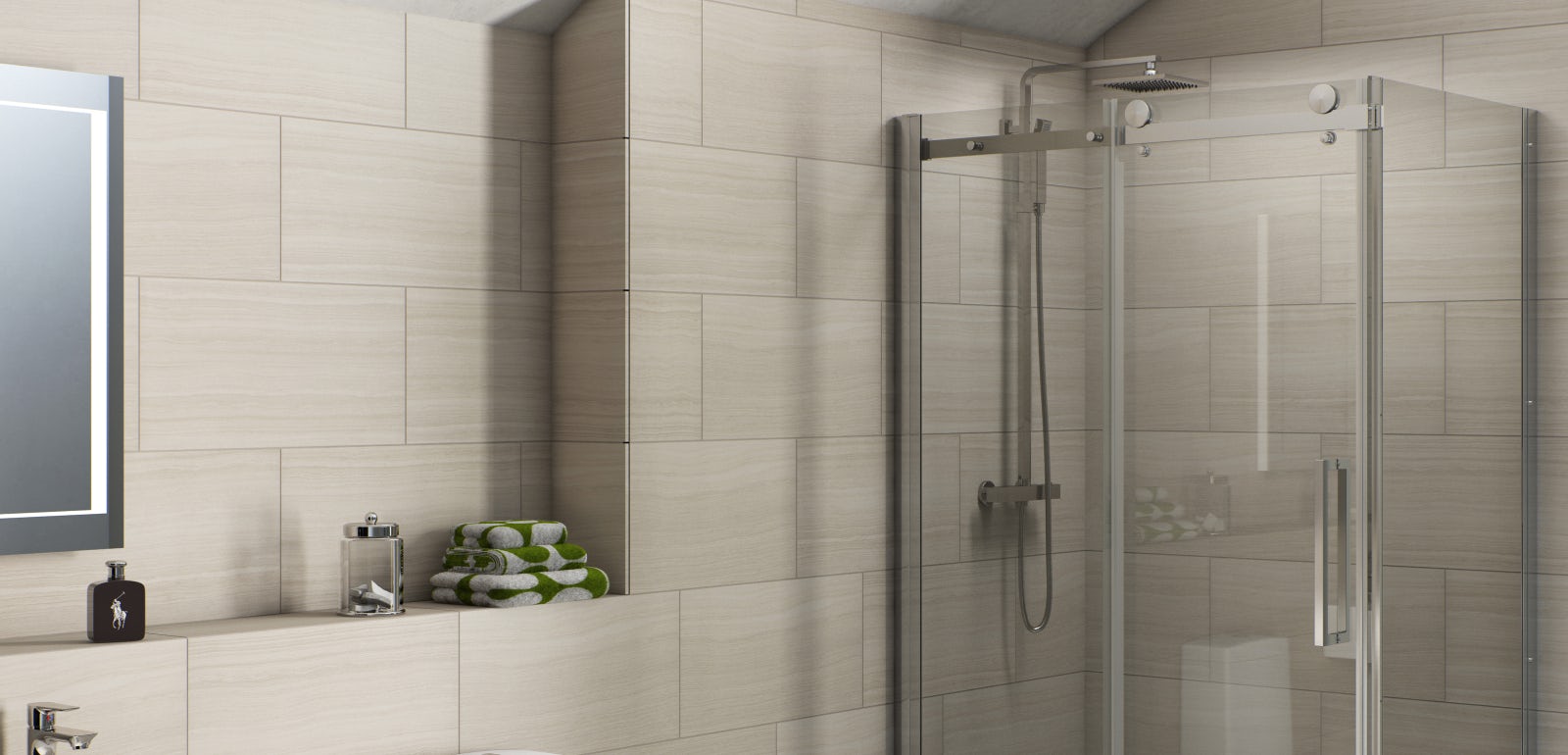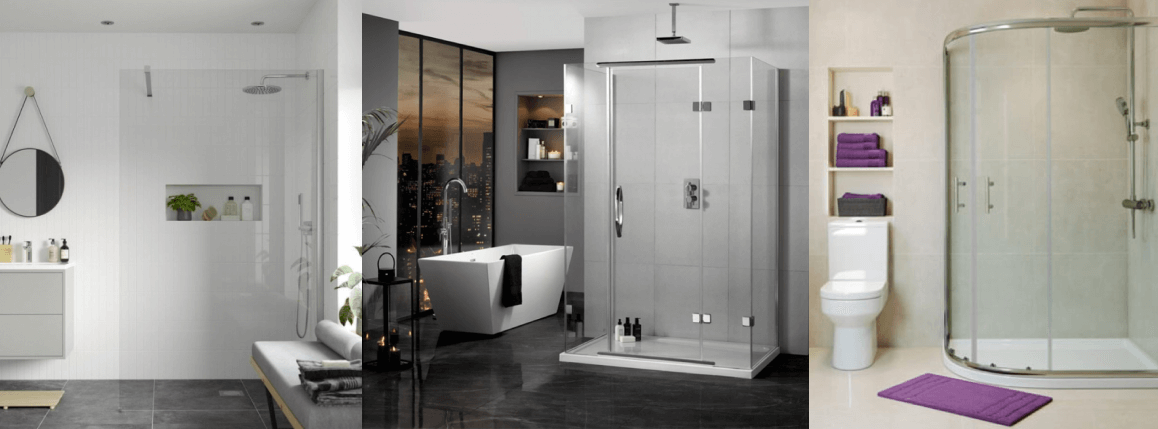Were you interested in critical information about How to Install a Shower Enclosure ?

A successful shower installment needs cautious planning and also a lot of job. In many cases, you will certainly need to do 3 types of tasks: framing wall surfaces, setting up the plumbing, and also ending up walls.
Preparation
To start with, you should select the kind of shower that you wish to set up. It is important to establish whether the picked shower is capable of handling particular systems and can regulate a risk-free degree of water via the central heating boiler. Many shower devices nowadays are designed to be flexible to different water pressures (such as kept hot water as well as chilly keys).
It is likewise crucial to consider the water pressure and the planning of the piping and drainage for the shower
Various Sorts Of Shower Units
- Push-on Mixer: The tube as well as spray parts of the push-on mixer shower system can be linked to the bathroom tap as per your need, and also the water temperature can be adjusted via the taps. Push-on mixers are cheap and exceptionally basic to mount. However, although the hose pipe link is basic, it is quickly displaced. Furthermore, it is inconvenient to readjust the temperature.
- Bath/Shower Mixer: The hose as well as spray of this type of shower are integrated with a bathroom mixer tap, and also the temperature can be changed through the bath faucets. It is an extremely inexpensive alternative and no additional plumbing is entailed. However, the bath/shower mixers likewise deal with inconvenient temperature level control options.
- Manual Mixer: The pipe and also spray of a hand-operated mixer shower device are a part of the wall system and also the hot and cold water supplies are connected to a solitary valve The temperature level and also pressure of the water are managed with either one or a range of handles (in a lot more costly showers). Although temperature level control is much easier in hand-operated mixer types, they are much more expensive than the formerly pointed out mixers. They also call for extra plumbing of cold and hot supply of water pipes.
- Thermostatic Mixer: The tube and also spray of this shower kind belong of the wall unit as well as the hot and cold water products are linked to a single shutoff below as well. It is complete with an integrated stabiliser to self-adjust the water temperature and also to avoid it from becoming as well warm. One of the biggest benefits of a thermostatic mixer shower type consists of convenient temperature level control. However, it is the most pricey of the different mixer choices.
- Power Shower: A power shower is a solitary unit consisting of a powerful electrical pump that can altering both the water pressure as well as temperature level. This type of shower can be fitted if there is supply of water from a cold water tank and also a warm water cylinder. A power shower makes the modification of both stress and also temperature level very easy. On the other hand, it is unsuitable for water heated directly by the shower or where the water is supplied by a combination central heating boiler under keys stress.
- Electric Shower: An electrical shower is plumbed right into a keys cold water supply as well as it heats up the water electrically. It is very important to keep in mind that for this shower type to be installed, the mains stress needs to be at least 0.7 kg/sq centimeters (10lb/sq in). The device enables the temperature and stress to be changed through a knob. Versions with temperature level stabilisers are better as they continue to be untouched by other faucets somewhere else in use within the house. A major drawback of electrical showers is that the control knob only permits the choice of heats at less stress, or lower temperature levels at a greater stress. This is problematic in the winter when the spray is typically weak as well as the keys water is colder. Nonetheless, this problem is dealt with in some versions which are available with a winter/summer setting.
Approach
Depending on the type of shower you want to install, the shower head need to either be suited order to prevent its contact with the water in the bath below or the base tray, or it should have a check shutoff.
Prior to beginning, it is suggested to note the settings of the shower head and also control, and also to intend the pipe-work entailed. Additionally, the drainage system to remove the waste water will need to be prepared. Both settings of the cord path as well as the shower switch will also need to be considered if an instant or electrical shower unit is being installed.
Make use of the direction guide offered with the shower unit to fit the shower control.Before fitting the pipelines that will supply the water to the shower system, it is essential to cut off the water. In order to secure the pipes, they need to be provided a waterproof covering as well as likewise fitted with separating valves. The pipelines can after that be buried right into the wall and also glued over to neaten the total look.
Fit the base tray, shower head, and also fittings.
Link the major shower control to the pipes that will be providing the water (This might require a women screw string adapter).
Reconnect the water supply as well as examination the pipes for any type of leakages, as some might need tightening up.
If you are mounting an electrical shower, keep in mind to turn off the power supply before making any electrical connections. When these links have been made (there ought to be assistance within the instruction manual), the power supply can be changed back on.
Changing Water Stress to Fit Your Shower
The cold water tank can be lifted to a higher height (in some cases as little as 150mm (6inches)) by fitting a solid wood assistance underneath it - potentially composed of struts and blockboards. If you pick this alternative, the primary and circulation pipes will additionally need to be raised to fulfill the brand-new height of the reservoir.
Conversely, a booster pump (a single pump or a dual/twin pump) can be fitted. Whichever type is chosen, it needs to be linked right into the power supply in order to operate.
Piping and also Drain
It is best to use 15mm size supply pipes, as well as make the runs to the shower as brief and also straight as feasible so as to keep maximum pressure as well as reduce warmth loss. In addition, by minimising making use of elbows for pipe corners, you can reduce the resistance in the flow of the water system. You can achieve this by bending the pipelines rather.
A Lot Of Common Mistakes
- Violating or overlooking regional code restrictions.
- Making use of pipes that are too tiny.
- Connecting copper to galvanized without using a brass or dielectric suitable in between both.
- Not using tape or pipeline compound at threaded joints.
- Uneven your fixtures when mounting them.
- Not setting up an air void filling up for components.
- Cutting supply stub outs as well brief to install the shutoff valves onto after the ended up wall remains in area.
- Not properly straightening tubing into fittings or quit shutoffs. (Forcing the nut onto the compression ring at an angle when the tubes is at an angle will certainly create a leak.).
- When turning the water back on in your house, always run the outdoors hose shutoff or flush your bathrooms to bleed dirt and also air from the lines. This debris can trigger problems in your sink taps and various other plumbing trim.
How Do You Install a Shower? Follow This Guide
Installing a Shower at a Glance
- Tools & Materials: Level, electric drill, caulk, hole saw, cedar shims, shower unit
- Step 1: Drill pilot holes
- Step 2: Prep fixture holes
- Step 3: Move unit into place
- Step 4: Caulk corners and base
- Step 5: Attach door
- Step 6: Install shower pan
Whenever plumbing is involved in a DIY project, people worry about what might go wrong. The truth is that installing a shower isn’t that complicated, and you can save a lot of money by doing it yourself. You shouldn’t need to make any alterations to your plumbing to complete the job, and most of the tools you need will be provided in your new shower kit.
Can I Install a Shower Myself?
Even if you’ve never installed a shower before, you’ll find this to be a project that is perfectly suited for DIYers with a moderate level of experience. Whether you're doing a bathtub conversion or installing a new stall, most of what you need comes in shower kits that you can purchase from a hardware store. The first thing you need to do is determine what type of shower stall you want.
Single-panel stalls are the easiest to install because they come preassembled. All you need to do is put them in place. Multi-panel showers require a few additional steps, but you’ve got more control over the appearance of your unit. Multi-panel units are also much easier to handle if you’re going to do the installation without any help.
Be sure to take all appropriate safety precautions, such as wearing eye protection and gloves. When you’re removing or installing a shower unit, you might kick up debris that could hurt your eyes. You’ll also need to work with equipment that will get extremely hot, so be sure to have safety gloves handy.
Tools and Materials
- 2- to 4-foot level
- Electric drill with a 1/8-inch drill bit
- Caulk
- 2-inch hole saw
- Cedar shims
- The unit itself
Before You Begin: Prep the Space
It’s highly important to measure your space accurately before putting the stall in. Measuring from the floor upward and from each corner outward will ensure you’ve got the right measurements. What you’re looking for is where the plumbing apparatuses are going to come through the stall. Transfer these measurements over to the back of your unit by drawing the locations of these holes using a pencil or marker.
Pull out your old shower and make sure to scrape off all the old caulking. Be thorough because you want to work with smooth surfaces for the best installation. Once you’ve pulled out your existing shower, you need to make sure that the floor is clean and dry. The best way to clean debris is with a shop vacuum, as it’ll soak up water and dirt together.
If you’re experiencing any plumbing issues, such as low water pressure, this is a perfect opportunity to solve them. Make sure that the pipes themselves are not in need of patching and clean your showerhead. When you turn the water back on after your project, check the pipes for signs of wear or disrepair. Anything beyond minor repairs should be handled by a plumber, and this is the best time to bring in a professional.
If the floor has any moisture at all, don’t proceed until it’s completely dry. The last thing you need is for the floor to rot or invite mold and mildew into your base. Once everything is dry, apply waterproof wallboard to the walls. This can be attached with screws or nails, then sealed with caulk so that water doesn’t seep into any crevices.

As a devoted person who reads on How to Install a Direct-to-Stud Shower Enclosure, I think sharing that article was mandatory. Sharing is caring. Helping people is fun. We appreciate reading our article about How to Install a One-Piece Shower Unit.
Give Me A Quote!
Comments on “Straightforward Guide to Installing a New Shower Unit”